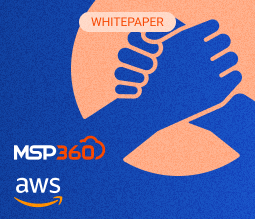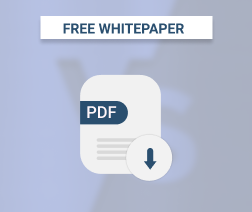Bandwidth and data transfer pricing can have a significant cost on your cloud-computing bill. And unlike the basic pricing of cloud-computing instances, data transfer costs on clouds like Amazon Web Services (AWS) and Azure can be difficult to compare, because each cloud provider uses a somewhat different model for data transfer pricing.
This article offers some clarity into this issue by comparing Azure bandwidth pricing and AWS transfer pricing. Specifically, we’ll focus on data transfer costs associated with Amazon S3 data storage and Microsoft Azure Blob Storage.
Table of Contents
Cloud Data Transfer Pricing Terminology
Before jumping into a comparison of AWS and Azure data transfer costs, let’s define several key terms:
- Data transfer. This is a generic term that refers to any type of movement of data over the network within the same cloud, or between a cloud and a different location (such as another cloud or on-premise infrastructure). Data transfers can involve moving data into the cloud or out of the cloud.
- Egress. This term refers to the transfer of data from a public cloud to another type of infrastructure, usually an on-premise data center.
- Ingress. This means the movement of data into a cloud.
- Bandwidth. In the context of cloud data storage costs, bandwidth is another generic term for referring to the transfer of data from any location to any other location. In other contexts, bandwidth can refer to the throughput of a network, but that is not typically what people mean when they use terms like “Azure bandwidth cost or “AWS bandwidth pricing.”
Amazon Web Services uses Data Transfer in/out instead of Egress/Ingress, used by Microsoft Azure
Azure Egress and Ingress Pricing
Azure bandwidth costs are based on several factors:
- The direction the data is moving (in other words, whether data is being transferred into or out of the cloud).
- The cloud region that hosts your data.
- How much data you transfer per month.
- Whether you use Azure Availability Zones.
For most Azure regions, data ingress - in other words, the movement of data into the cloud - is free. Data egress is also free in small amounts; in most Azure regions, there is no charge for the first five gigabytes of data transferred per month.
After that point, however, Azure bandwidth costs can add up, and they vary significantly based on region. For example, in the East U.S. region, Azure charges $0.05 per gigabyte for data egress beyond 350 gigabytes per month, whereas Azure bandwidth pricing in the Brazil South region are more than three times that amount, at $0.16 per gigabyte. Thus, you can save money on Azure bandwidth costs by selecting a zone with lower data pricing.
Data transfer costs for Azure are also lowest when your monthly volume is high. Pricing flattens out once you reach 350 gigabytes or month, at which point you will pay the lowest per-gigabyte rate regardless of how much you transfer in excess of 350 gigabytes. You may be able to save money by performing large-scale data transfers out of Azure in the same month, rather than spreading them across multiple months, so that you exceed 350 gigabytes and can take advantage of the lower pricing; of course, this strategy may not always be feasible depending on your data transfer needs.
There is a small cost for both data ingress and data egress within Azure Availability Zones. Currently, this cost is a flat $0.01 per gigabyte for all Azure regions. This cost is therefore minimal in comparison to other Azure egress pricing. Given that the rate is the same for all volumes of data in all regions, there is not much you can do to optimize this Azure bandwidth cost.
For details on Azure pricing, see the interactive chart.
Notably, Azure bandwidth costs do not vary between different types of services in most cases. However, some Azure services charge fees based on data operations; for example, Azure Blob Storage has fees for data write and data read operations, which vary depending on which tier of storage you use. These are not the same thing as data transfer costs, but they will impact the cost of Azure data egress or ingress.
AWS Data Transfer Pricing
AWS transfer pricing is somewhat more complicated than Azure’s. On AWS, bandwidth costs vary depending on:
- The direction the data is moving (in other words, whether data is being transferred into or out of the cloud).
- Which region hosts your data, and which region you are moving it to or from.
- How much data you transfer per month.
- Which type of service you are using. For example, Amazon S3 has different bandwidth pricing than AWS RDS.
- Whether you are using generic AWS infrastructure or special infrastructure, such as GovCloud.
- Whether you take advantage of special features, like AWS Transfer Acceleration (which enables faster data transfers using edge networking and network route optimization) or use standard data transfers. Azure doesn’t offer an equivalent service. (Azure does offer a service called Accelerated Networking, but its purpose is to reduce computation bottlenecks related to network data transfers in certain scenarios, not to speed network throughput via optimized network routing.)
For standard S3 storage, AWS data ingress is free, as is the transfer of data from S3 to other AWS services within the same region. Transferring data between S3 buckets in different regions costs a flat $0.02 per gigabyte for most regions.
Discover how MSP360 and Amazon S3 can benefit your business


AWS data egress costs are free for the first gigabyte. They then cost $0.09 per gigabyte for the first ten terabytes, and the cost gradually decreases from there until you reach a volume of 150 terabytes, at which point the price is a flat $0.05 per gigabyte. This means that, unlike Azure (where you get the lowest data transfer rates once you surpass 350 gigabytes of data transferred per month), on Amazon S3 you have to reach a much higher threshold before the lowest rates kick on. On the other hand, the lowest rates on both clouds are the same, at $0.05 per gigabyte, in most regions.
In order to compare the bandwidth costs of Azure Storage and Amazon S3 storage, it’s important to note that unlike Azure Storage, S3 doesn’t impose additional fees for read or write operations. Thus, the data egress costs associated with S3 are the total cost you’ll pay for moving data out of S3.
As noted above, taking advantage of AWS Transfer Acceleration can significantly increase data transfer costs on S3. Transfer Acceleration adds an extra $0.04 per gigabyte for data egress, and $0.04 to $0.08 (depending on which regions you use) for ingress.
Because of the complexity of AWS data transfer rates, it’s impossible to make generic recommendations for reducing AWS bandwidth costs. The best approach is to use the AWS Cost Calculator to simulate your deployment and experiment with different region and feature settings to determine how they impact overall cost.
Microsoft Azure Blob vs Amazon S3 Data Transfer Pricing Comparison
| Threshold for lowest per-gigabyte bandwidth cost | Lowest egress cost rate (beyond minimal free use) | Ingress cost | Other important cost factors | Are bandwidth costs consistent between cloud services? | |
| Microsoft Azure Blob | 350 gigabytes/month | $0.05 per gigabyte (plus data read/write costs) | Free | Data read/write fees | Basically, yes |
| Amazon S3 | 150 terabytes/month | $0.05 per gigabyte (includes read-write costs) | Free (except with Transfer Acceleration) | Transfers to different regions, using GovCloud, using Transfer Acceleration | No |
Conclusion
A variety of factors affect AWS data transfer pricing and Azure data transfer rates. In general, taking care to select the most cost-effective regions and to avoid unnecessary features will result in the lowest overall data transfer cost. But perhaps the most important lesson is that, although data transfer fees may seem minimal compared to other cloud computing costs, they can add up quickly; that’s why it’s important to factor these costs in when planning your overall cloud strategy.






